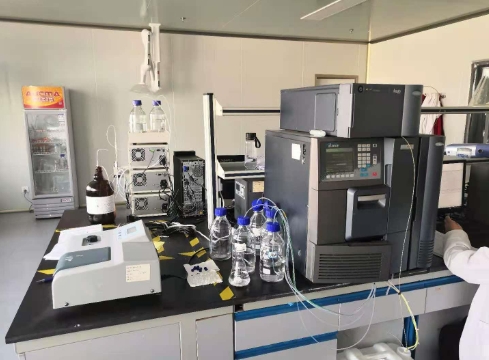Peptides are widely used in the pharmaceutical industry, raw materials, dyes and other fields. The solubility of peptides is a key factor affecting the success or failure of laboratory experiments.
Generally, the solubility of peptides is closely related to the amino acid sequence of the whole peptide chain. When the overall acidic peptide is difficult to dissolve, it is necessary to add an appropriate amount of alkaline solution, and when the alkaline peptide is difficult to dissolve, it is necessary to add an appropriate amount of acidic solution. When the sequence contains a variety of hydrophobic amino acids or neutral amino acids, it cannot be dissolved in water immediately, and often needs to put in a little organic solvent first. After dissolving thoroughly, it is diluted in large quantities with distilled water. The commonly used organic solvents are acetonitrile, DMSO, DMF, propanol, isopropanol, etc. It should be noted that the peptide chain containing Met or Cys should not be dissolved with DMSO, which may cause oxidation of the S contained in the peptide chain. In addition, in order to help customers customize peptides to meet better experimental results, we often provide customers with some reasonable suggestions for the physical properties, chemical properties and molecular structure of the peptide chain.
How to increase the solubility of peptides
The solubility of poorly soluble peptides can be improved by:
1. Make modifications to the C and N termini of the polypeptide chain: for acidic peptides, we suggest that the C terminus be acetylated, and for basic peptides, we suggest that the N terminus be aminated.
2. Change the amino acid sequence in the polypeptide chain: Some sequences have many continuous hydrophobic amino acids, such as W,F,V,I,L,M,Y. When such hydrophobic amino acids appear in large quantities or continuously and repeatedly in the sequence, the whole peptide chain is generally insoluble, in order to improve the polarity and hydrotropism of the peptide, we will recommend customers to add the sequence without changing the experimental results. Alternatively, the solubility can be improved by reducing the number of hydrophobic amino acids.
3. Replacing the hydrophobic amino acid residues in the sequence: replacing the hydrophobic amino acid residues in the sequence with soluble amino acids can improve the solubility. We generally use Gly and Ala to replace hydrophobic amino acids, usually get a good dissolution effect, which is also a traditional but efficient way to improve the solubility of peptides.
Post time: Mar-05-2024

